Corinth › Coyolxauhqui › Daily Life in the Inca Empire » Origins and History
Articles and Definitions › Contents
- Corinth › Origins
- Coyolxauhqui › Origins
- Daily Life in the Inca Empire › Origins
Ancient civilizations › Historical places, and their characters
Corinth › Origins
Definition and Origins
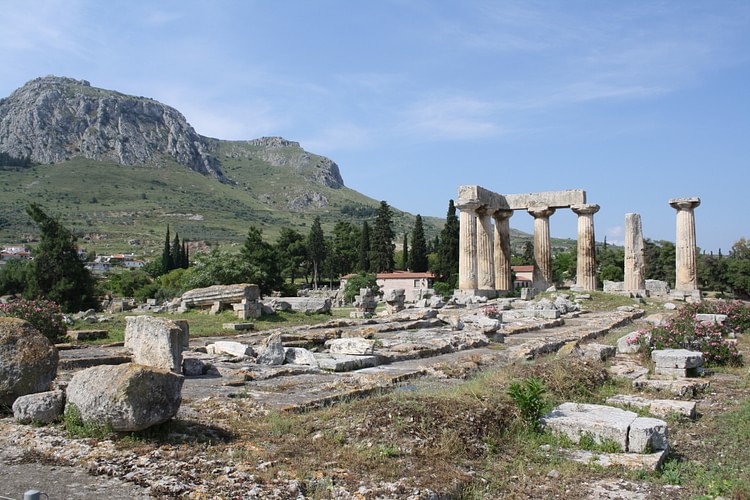
Located on the isthmus which connects mainland Greece with the Peloponnese, surrounded by fertile plains and blessed with natural springs, Corinth was an important city in Greek, Hellenistic, and Roman times. Its geographical location, role as a centre of trade, naval fleet, participation in various Greek wars, and status as a major Roman colony meant the city was, for over a millennium, rarely out of the limelight in the ancient world.
CORINTH IN MYTHOLOGY
Not being a major Mycenaean centre, Corinth lacks the mythological heritage of other Greek city-states. Nevertheless, the mythical founder of the city was believed to have been King Sisyphus, famed for his punishment in Hades where he was made to forever roll a large boulder up a hill. Sisyphus was succeeded by his son Glaucus and his grandson Bellerophon, whose winged-horse Pegasus became a symbol of the city and a feature of Corinthian coins. Corinth is also the setting for several other episodes from Greek mythology such as Theseus ' hunt for the wild boar, Jason settled there with Medea after his adventures looking for the Golden Fleece, and there is the myth of Arion - the real-life and gifted kithara player and resident of Corinth - who was rescued by dolphins after being abducted by pirates.
HISTORICAL OVERVIEW
First inhabited in the Neolithic period (c. 5000 BCE), the site became more densely populated from the 10th century BCE.The historical founders of the city were the aristocratic descendants of King Bacchis, the Bacchiadae, in c. 750 BCE. These replaced the long line of kings which stretched back in time before historical records. The Bacchiadae ruled as a body of 200 until in c. 657 BCE the popular tyrant Cypselus took control of the city, to be succeeded by his son Periander (re. c. 627-587 BCE). Cypselus funded the building of a treasury at Delphi and founded colonies which included Ambracia, Anactorium, and Leucas. These added to the existing Corinthian colonies of Corcyra ( Corfu ) and Syracuse in Sicily which had been founded in 734 BCE (traditional date).
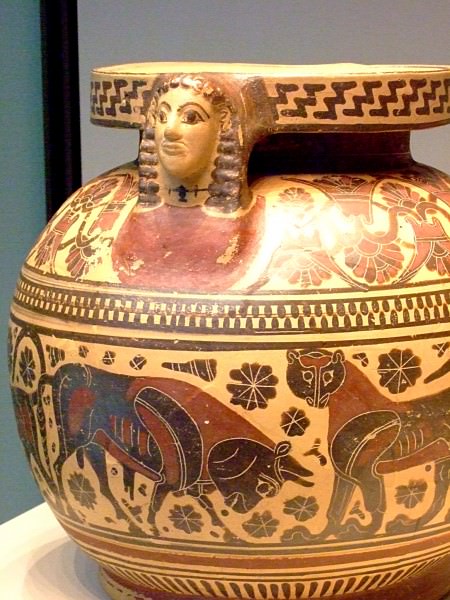
Corinthian Vessel with Protome
From the 8th century BCE, the high quality of Corinthian pottery led to its export across Greece. Indeed, Corinthian pottery, with its innovative figure decoration, would dominate the Greek pottery market until the 6th century BCE when Attic black-figure pottery took over as the dominant style. Other significant exports were Corinthian stone and bronzewares. Corinth also became the hub of trade through the dilokos. This was a stone track with carved grooves for wheeled wagons which offered a land short-cut between the harbours of Lechaion on the Corinthian Gulf and Kenchreai on the Saronic Gulf and probably dates to the reign of Periander. In the Peloponnesian War the diolkos was even used to transport triremes from one sea to the other and it continued to be used until the 9th century CE. Although the idea for a canal across the isthmus was first considered in the 7th century BCE and various Roman Emperors from Julius Caesar to Hadrian began preliminary feasibility studies, it was Nero who actually began the project in 67 CE. However, on the emperor's death, the project was abandoned after three months, not to be resumed until 1881 CE.
From the early 6th century BCE, Corinth administered the Panhellenic games at nearby Isthmia, held every two years in the spring. These games were established in honour of Poseidon and were particularly famous for their horse and chariot races.
An oligarchy, consisting of a council of 80, gained power in Corinth in c. 585 BCE. Concerned with local rival Argos, from c.550 BCE Corinth became an ally of Sparta. Together, an expedition was launched against Polycrates of Samos in c. 525 BCE but was ultimately unsuccessful. During Cleomenes' reign though, the city became wary of the growing power of Sparta and opposed Spartan intervention in Athens. Corinth also fought in the Persian Wars against the invading forces of Xerxeswhich threatened the autonomy of all of Greece.
Corinth suffered badly in the First Peloponnesian War, for which it was responsible after attacking Megara. The Corinthians were also instrumental in causing the Second Peloponnesian War, when they felt their regional interests centred in Corcyra were threatened by Athens in 433 BCE. Once again though, the Corinthians, mainly as Sparta's naval ally, had a disastrous war. The city did, however, successfully defend its colony of Syracuse when it was attacked by Athenian forces. Disillusioned with Sparta's reluctance to completely destroy Athens after their victory in the war in 404 BCE and concerned over Spartan expansion in Greece and Asia Minor, Corinth formed an alliance with Argos, Boeotia, Thebes, and Athens to fight Sparta in the Corinthian Wars (395-386 BCE). The conflict was largely fought at sea and on Corinthian territory and was yet another costly endeavour for the citizens of Corinth.
THE CITY WAS ONCE MORE FLOURISHING BY THE 1ST CENTURY CE AND BECAME AN IMPORTANT ADMINISTRATIVE AND TRADE CENTRE.
One final conflict, this time against the invading Philip II of Macedon, was once again lost at Chaeronea in 338 BCE. Corinth did become the seat of the Corinthian League, but an unfortunate consequence of this dubious honour was a Macedonian garrison being stationed on the Acrocorinth acropolis overlooking the city. A succession of Hellenistic kings took control of the city - starting with Ptolemy I and ending with Aratus in 243 BCE, when Corinth joined the Achaean League. Worse was to follow, however, when the Roman commander Lucius Mummius sacked the city in 146 BCE.
A brighter period returned to the city when Julius Caesar founded his colony at the site in 44 BCE and organised the agricultural land into organised plots ( centuriation ) for distribution to Roman settlers. The city was once more flourishing by the 1st century CE and became an important administrative and trade centre. In addition, following St. Paul ’s visit between 51 and 52 CE, Corinth became the centre of early Christianity in Greece. In a public hearing, the saint had to defend himself against accusations from the city's Hebrews that his preaching undermined the Mosiac Law. The pro- consul Lucius Julius Gallio judged that Paul had not broken any Roman Law and so was permitted to continue his teachings. From the 3rd century CE the city began to decline and the Germanic Heruli and Alaric tribes attacked the city in 267 CE and 396 CE respectively.
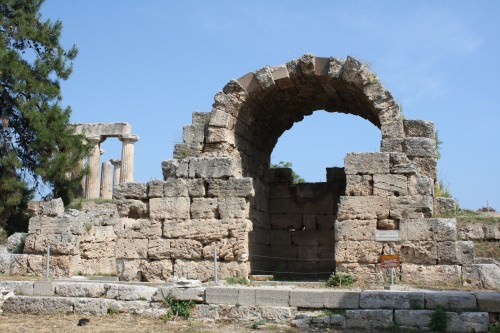
Agora, Corinth
THE ARCHAEOLOGICAL SITE
In Greek Corinth there were cults to Aphrodite (protectress of the city), Apollo, Demeter Thesmophoros, Hera, Poseidon, and Helios and various buildings to cult heroes, the founders of the city. In addition, there were several sacred springs, the most famous being Peirene. Unfortunately, the destruction in 146 BCE obliterated much of this religious past. In Roman Corinth, Aphrodite, Poseidon, and Demeter did continue to be worshipped along with the Roman gods.
The site today, first excavated in 1892 CE by the Greek Archaeological Service, is dominated by the Doric peripteral Temple of Apollo (c. 550-530 BCE), originally with 6 columns on the façades and fifteen on the long sides. A particular feature of the temple is the use of monolithic columns rather than the more commonly used column drums. Seven columns remain standing today.
The majority of the other surviving buildings date from the 1st century CE in the Roman era and include a large forum, a temple to Octavia, baths, the Bema where St. Paul addressed the Corinthians, the Asklepeion temple to Asclepius, and a centre of healing, fountains - including the monumental Peirine fountain complex (2nd century CE) - a propylaea, theatre, odeion, gymnasium, and stoas. There are also the remains of three basilicas.
Archaeological finds at the site include many fine mosaics - notably the Dionysos mosaic - Greek and Roman sculpture - including an impressive number of busts of Roman rulers - and outstanding examples of all the styles of Greek pottery, the first source of the city's fame in the ancient world.
Coyolxauhqui › Origins
Definition and Origins
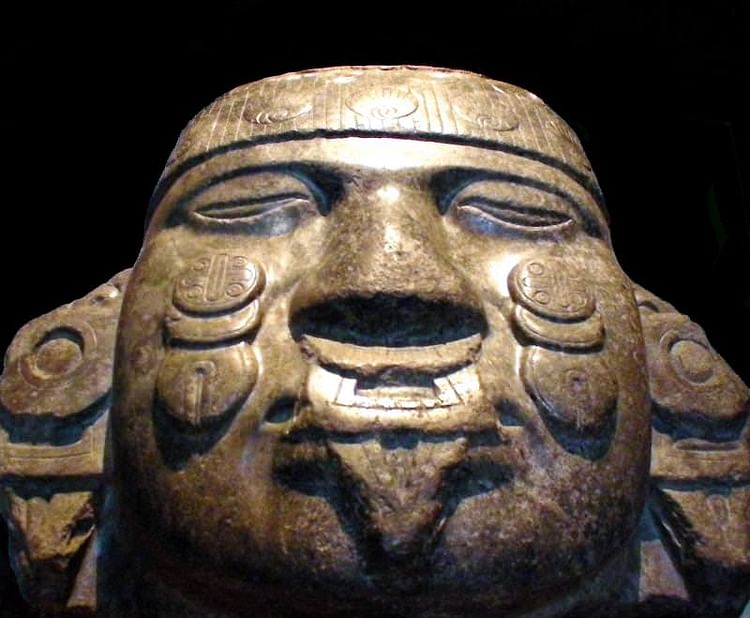
Coyolxauhqui ( pron. Koy-ol-shauw-kee) was the Aztec goddess of the Moon or Milky Way who was famously butchered by her brother Huitzilopochtli, the god of war, in Aztec mythology. This story was commemorated in a celebrated large relief stone found at the foot of the pyramid of sacrifices, the Templo Mayor at the Aztec capital Tenochtitlan.
COYOLXAUHQUI VS. HUITZILOPOCHTLI
Coyolxauhqui, whose name signifies 'Painted with Bells', was considered either the sister or mother of Huitzilopochtli, the Aztec god of war and patron of Tenochtitlan. In the first version of this mythical duel, Coyolxauhqui upset her son Huitzilopochtli when she insisted on staying at the legendary sacred mountain Coatepec ('Snake Mountain', also spelt Coatepetl) and not following Huitzilopochtli's plan to re-settle at a new site – the eventual Tenochtitlan. The god of war got his own way by decapitating and eating the heart of Coyolxauhqui, after which he led the Aztecs to their new home.
In the second version of this family strife, rebellious Coyolxauhqui led her 400 brothers, known as the Centzon Huitznaua (the 'Four Hundred Huiztnaua' who represented the stars of the southern sky), in a bid to kill her mother, the goddess Coatlicue.The pretext for this attack had been the news that Coatlicue had become pregnant in somewhat bizarre and dishonourable circumstances. Performing her duties, one day, as a cleaner at the shrine on the top of the sacred mountain Coatepec, a ball of feathers suddenly descended from the heavens and when Coatlicue tucked this into her belt it miraculously impregnated her. The resulting child was none other than the powerful warrior Huitzilopochtli.
HUITZILOPOCHTLI CHOPPED UP COYOLXAUHQUI INTO SEVERAL LARGE CHUNKS AND LOBBED THE PIECES DOWN THE SACRED SNAKE MOUNTAIN.
Coyolxauhqui's plot came unstuck, though, when one of the Huiztnaua lost heart and decided to warn the still unborn Huitzilopochtli. Rising to his mother's defence the god sprang from the womb fully-grown and fully-armed as an invincible warrior. In another version, the god springs from his mother's severed neck after Coyolxauhqui had decapitated her. Either way, with his formidable weapon, the xiuhcoatl ('Fire Serpent') which was actually a ray of the sun, the warrior-god swiftly butchered his unruly siblings and, chopping up Coyolxauhqui into several large chunks, he lobbed the pieces down the mountainside. The head of the goddess was tossed into the sky and so became the moon.
This gruesome sibling myth may symbolise the daily victory of the Sun (one of Huitzilpochtli's associations) over the Moon and stars. That is even if the association with the moon has no particular archaeological evidence to support it and some scholars have argued that Coyolxauhqui was, instead, associated with the Milky Way.
THE GREAT COYOLXAUHQUI STONE
The myth of Coyolxauhqui's demise at the hands of Huitzilopochtli was commemorated in a large stone disk, known as the Great Coyolxauhqui Stone, which was excavated at the base of the Templo Mayor, Tenochtitlan. It depicts in high relief the dismembered and decapitated corpse of Coyolxauhqui and dates to c. 1473 CE during the reign of Axayacatl. The goddess wears only a warrior's belt with skull, a headdress with eagle down feathers, and a bell on her cheek. The Templo Mayor pyramid was actually a twin shrine to the rain god Tlaloc and the war god Huitzilopochtli. A double staircase climbed the temple, and the disk was placed, significantly, at the base of the steps leading to Huitzilpochtli's shrine. It was atop this temple that humans were sacrificed and their bodies dismembered and tossed down the steps to land at the base, just as in the myth on Snake Mountain.
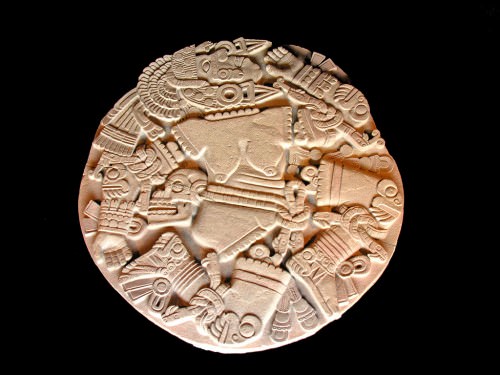
Coyolxauhqui
Besides reminding of the importance of Huitzilopochtli, the stone was also a stark warning to the enemies of the Aztecs who saw themselves as the victorious warrior Huitzilopochtli. Defeated warriors led up the steps of the Temple Mayor for the ultimate sacrifice would have been reminded that they were soon to be the equivalent of the defeated Coyolxauhqui.
The 3.4 m (10.5 ft) diameter stone was re-discovered in 1978 CE when workers were excavating the basement of a bookstore in downtown Mexico City. In condensing a three-dimensional scene onto a two-dimensional plain, it is one of the great masterpieces of Aztec art and now resides in the Museo del Templo Mayor in the city in which it was discovered.
OTHER REPRESENTATIONS IN ART
Other notable representations of Coyolxauhqui are a fragmentary greenstone (diorite) slab which is older and (along with a stucco sculpture of the goddess) lay beneath the stone disk described previously. This earlier stone shows Huitzilopochtli's xiuhcoatl weapon piercing the goddess' chest and probably dates to the reign of Motecuhzoma I (1440-1469 CE).
Another famous representation of Coyolxauhqui is a large greenstone severed head found at Tenochtitlan which was probably carved during the reign of Ahuitzotl (1486-1502 CE). The goddess once again has the golden coyolli bells on each cheek.This head now resides in the Museum of Anthropology in Mexico City.
Daily Life in the Inca Empire › Origins
Ancient Civilizations
Daily life in the Inca empire was characterised by strong family relationships, agricultural labour, sometimes enforced state or military service for males, and occasional lighter moments of festivities to celebrate important life events in the community and highlights in the agricultural calendar.
THE FAMILY & AYLLU
The family was a fundamental component of Inca society, and strong attachments were made between even distant relations, not just close family. For example, the words for father and uncle were the same, as were mother and aunt, and the word for cousin was the same as brother and sister. Naming conventions illustrate that the male line was regarded as the most important by the Incas.
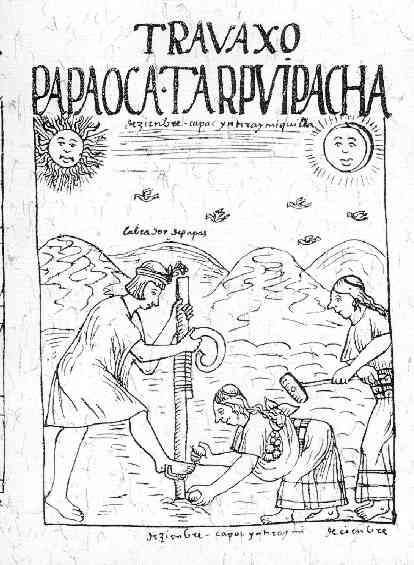
Inca Farmers
The wider family would all have been members of the same kin group or ayllu. Some of these, composed of hundreds of small family units, were large enough to be categorised as a subtribe. Marriage outside of this group was unusual so that all members of the ayllu were, in practice, related. They believed they came from a common ancestor, usually a legendary figure or even a mythical animal. Ancestors were often mummified and revered in regular ritual ceremonies. A further collective identity besides blood was the fact that an ayllu owned a particular piece of territory and the elders parcelled it out for individual families to work on so that they might be self-sustainable.
INCA COMMUNITIES HAD MOST OPPORTUNITY TO REINFORCE SHARED CULTURAL PRACTICES & PERSONAL TIES AT BIRTHS, MARRIAGES & FUNERALS.
The ayllu system of social governance was much older than the Incas themselves, but following their conquest of local tribes they used its conventions – for example, common labour in the service of the ayllu chief or chiefs and role as a political and trading body for relations with other ayllu – to good effect to better govern their empire. The Incas also put greater emphasis on the geographical ties between individuals and introduced a new aristocratic class which could not be accessed from a lower social group through marriage. Even new ayllus were created (each Inca king created his own, and forced resettlement was another reason), and above all, warriors now no longer pledged allegiance to the leader of their ayllu but to the Inca ruler at Cuzco. In the same way, the worship of particular local deities by any one ayllu was permitted to continue, but these were made subservient to the Inca gods, especially the sun god Inti. Finally, the Incas kept precise census records using their quipu ( khipu ) devices of knotted-string, in which males within the empire were classified according to their age and physical capacity for work in mines, fields, or the army.
Several of these cultural changes under Inca rule may well have been factors in the empire's collapse following the European invasion and explain many communities' readiness to join forces with the conquistadores against their Inca overlords. With distant leaders, imposed tribute and religion, and a feeling of isolation and anonymity in the vast Inca empire, the traditional ayllu with its close ties between individuals, a common heritage, and familiar leadership must have seemed a much more preferable way of life.
BIRTH
As with most ancient (and perhaps many modern) cultures, the events, besides warfare, when Inca communities had most opportunity to reinforce shared cultural practices and personal ties were births, marriages, and funerals. Again, common to ancient societies, births and deaths were high, especially the infant mortality rate. Families in ancient Peru on average had five members. There was no birth control (or infanticide), and children of both sexes were welcomed so that they might assist the family working the fields. Pregnancy did not interrupt a woman's agricultural duties, and when she gave birth, there was no help from a midwife. Babies were kept in a wooden portable cradle that the mother could carry while she worked.
Once weaned, a feast (the rutuchicoy ) was held at which the baby was named, given gifts, and clippings of its nails and hair were kept aside. The child was instructed in all it needed to know by its parents as there were neither schools nor a writingsystem and they were expected to help their parents as soon as they could walk. For this reason, most children would have learned the trade of their parents. Children of the nobility at Cuzco did, however, receive some formal instruction concerning Inca religion and history, the quipu, and warfare. A select number of girls were chosen as future priestesses and trained in religion, weaving and the cooking of special dishes and preparation of chicha beer for religious feasts.
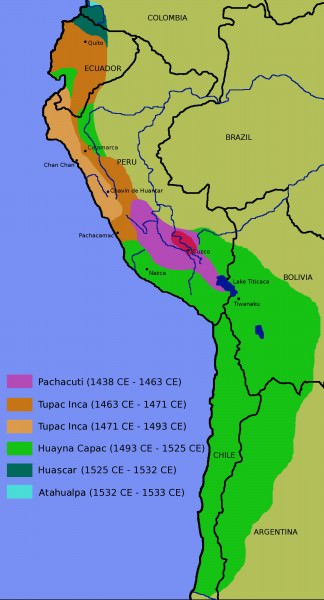
Map of the inca Empire
PUBERTY
Puberty was an important passage for both boys and girls. The latter had a feast in their honour and were given gifts and their name (by their most senior uncle) to be used for their adult life. Boys had a more communal rite of passage involving races and sacrifices when their ears were pierced in order to wear the earspools of Inca rank. Here too, they were given a new adult name. There were no surnames in Peruvian society, and first names could be anything that best described the individual, leading to such names as 'Condor' ( Kuntur ), 'Jaguar' ( Uturunku ), 'Star' ( Cuyllor ), ' Gold ' ( Qori ), and 'Pure' ( Ocllo ).Children of the elite would have carried several other names and titles depending on the rank and deeds they achieved through life.
MARRIAGE
The next big event in a young person's life was marriage. This probably took place when the couple were in their teens, although chroniclers disagree on the matter. A male was not considered an adult until he had married. As in any agricultural economy, it was not economically feasible for a person to remain single, and for the same reason, divorce was unheard of, at least formally speaking. The choice of partner seems to have been largely up to the individuals concerned in consultation with their parents. When the father of the girl accepted the traditional gift of coca leaves from the boy, the deal was done. The wedding ceremonies were not held for individual couples but perhaps once annually for all those getting married in a particular ayllu. In some areas, there was also the possibility of trial marriages where the couple lived together for a short period before committing to the full obligation of marriage. As virginity was not particularly prized in ancient Peru, the girl did not suffer any reputational repercussions, at least in that respect, from failed trials.
After the non-religious ceremony of feasting and gift exchange, the bride moved into the area of her partner's family in a new home and worked that land alongside her husband which he had inherited at birth. The quantity of land the bride had inherited (half the size of that given to males) was given back to the ayllu's communal lands. The family home was a simple affair of mud-brick or beaten mud walls with a thatch roof, a single low door and no windows. Inside was a central hearth and beds were made from llama skins. The living space was divided into two areas: one for sleeping and the other for cooking and keeping domestic animals such as guinea pigs.
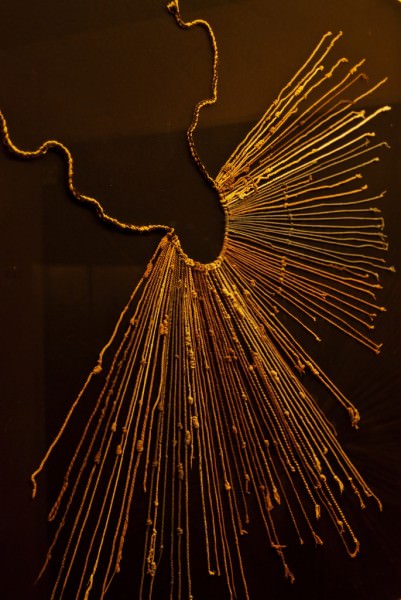
Khipu
In a culture where frequent wars meant that the male population was significantly smaller than the female, polygamy was permitted, although it seems to have been restricted largely to the aristocracy for whom it was also common to have many concubines. The first wife was always the most senior if there were secondary wives. A widower could remarry anyone he chose, but a widow could only marry her husband's brother.
WORKING LIFE
Both sexes worked in the fields using simple tools, and often in teams, or they raised livestock or fished and hunted, depending on their location. Men might be required to perform labour duties (building and maintaining Inca roads or farming on Inca state lands) or military service to the Inca rulers. When this happened and men were called away, their neighbours helped out so that the family farm could continue to function.
Women were expected to prepare the meals, care for the children, and perform such needed tasks as cleaning and weaving.The latter provided camelid-wool clothes, usually only one set for each member of the family. Regarding clothes, when worn at all, men wore trousers ( huara ), a sleeveless shirt ( cushma or uncu ), and, if necessary, a woollen cape ( yacolla ). Women wore a long belted tunic ( anacu ) and a yacolla, too. Footwear, if worn at all, was in the form of leather and woollen-cord sandals ( usuta ). Besides weaving other crafts might have been done, most typically pottery, which was made by both sexes.
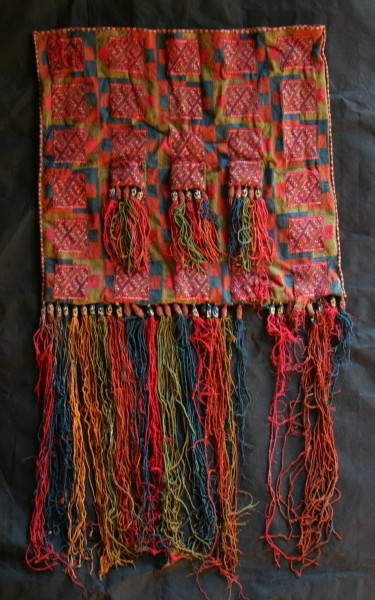
Inca Textile Bag
Probably meal times were the most anticipated daily events, once in the morning and again in the evening, with wood or llama dung being the most common fuels. Diet was largely vegetarian with meat being reserved for special occasions, although coastal communities would have had access to seafood. Quinoa porridge, maize, and potatoes were staples, wild fruits were readily available ranging from sour cherries to pineapples, and treats included popcorn.
Both sexes would have participated in public religious ceremonies and in festivities related to the agricultural calendar, where drinking chicha beer would have been a highlight. Dancing was an important feature of the festivities when dancers mimicked activities such as hunting, sowing, or battles. Musical accompaniment came from ceramic panpipes, drums, bells, clackers, rattles, tambourines, and seashell trumpets. Leisure activities seem to have been few and far between, but there is evidence of sports such as running and jumping, boardgame-playing, and gambling using dice. Poetry recitals, recounting myths and singing traditional ballads were other popular pastimes.
DEATH
Ancestor worship was an important part of ancient Peruvian culture. Individuals were mummified and carefully stored so that they might be brought out again in regular public ceremonies. Mummies were set in a foetal position and wrapped in fine textiles if the family could afford it. The possessions of the deceased and the tools they used in life were also buried with them or, on occasion, burned in ritual. The funeral ceremony might last a week, and in the case of the nobility, the individual's lesser wives and servants were sometimes sacrificed to accompany the body into the next life. Mummies were either buried in graves or placed in caves. Children who did not reach adulthood were often buried in pottery urns. A period of mourning was observed (up to a year for the elite at Cuzco) during which black clothes were worn and women covered their heads. A man could not remarry within one year, sometimes even two, of the funeral ceremony of his first wife. The tombs of the deceased were regularly reopened to offer food and drink to the mummies or to add new occupants.
LICENSE
Article based on information obtained from these sources:with permission from the Website Ancient History Encyclopedia
Content is available under License Creative Commons: Attribution-NonCommercial-ShareAlike 3.0 Unported. CC-BY-NC-SA License